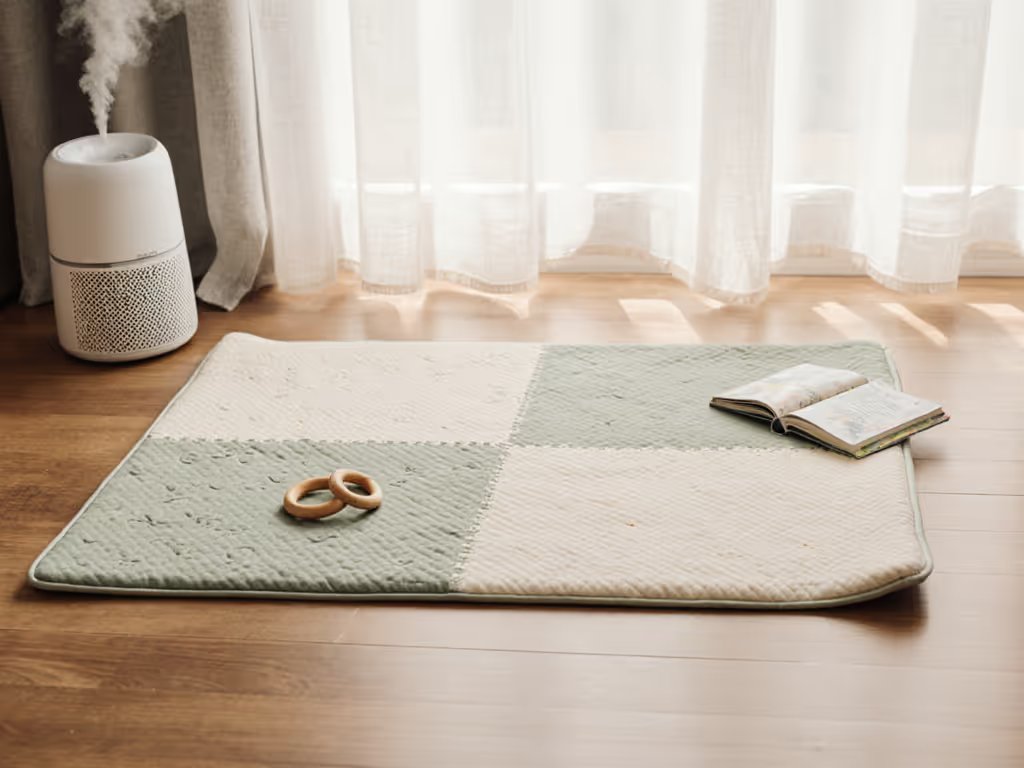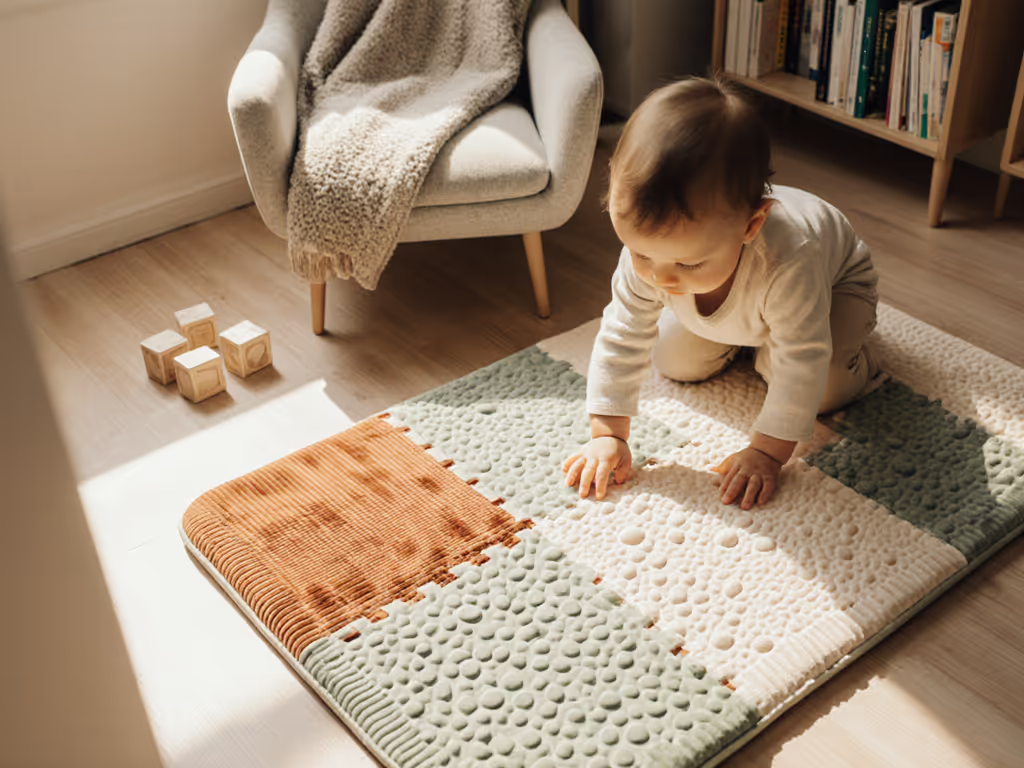
Toddler Play Mat Activities for 2+ Year Olds
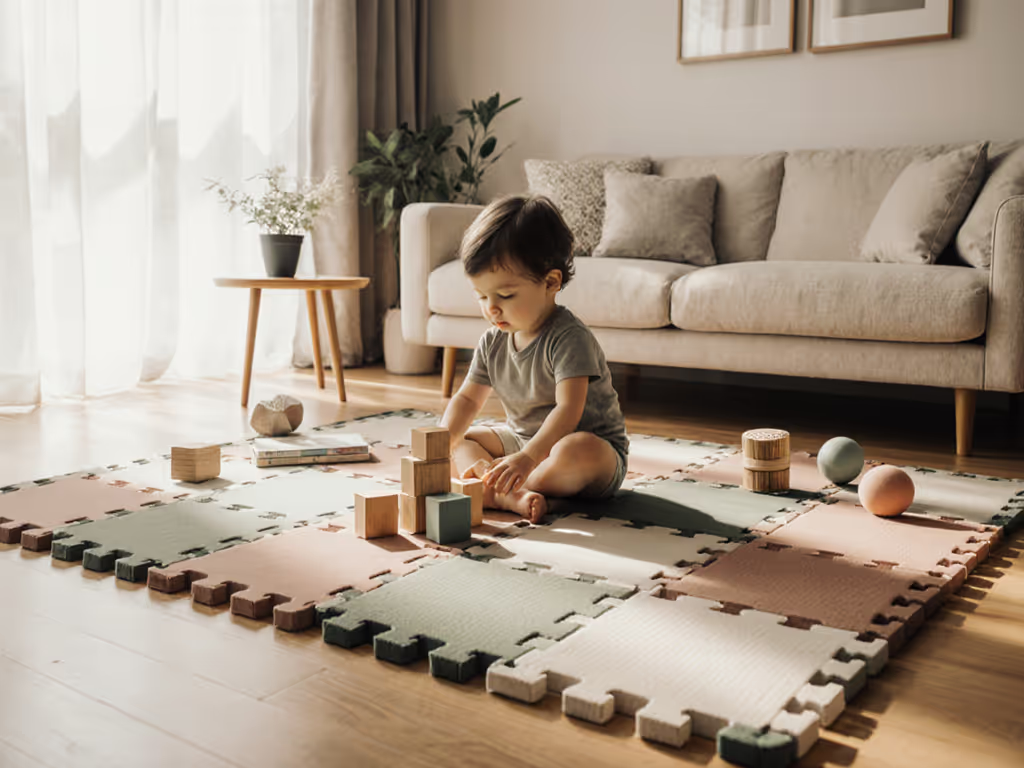
Beyond Tummy Time: Elevating Toddler Play Mat Activities for 2+ Year Olds
When your little one outgrows the 'new baby' stage, finding purposeful toddler play mat activities becomes critical, not just for entertainment, but for nurturing rapidly developing minds and bodies. Yet most parents face a frustrating reality: their carefully chosen baby play mat now feels too small, too basic, or completely irrelevant for a 2+ year old. What if your play mat could evolve with your child, supporting advanced motor skills, imaginative play, and even social development well into the toddler years? I've spent years dissecting play mat safety reports and watching how kids actually use these spaces. Let's cut through the noise with evidence-backed strategies that maximize your investment, and ensure your 2+ year old play mat delivers real developmental value. For a step-by-step roadmap beyond infancy, see our toddler play mat guide.
Why Standard Play Mats Fall Short for Toddlers
Many parents assume play mats are 'one-size-fits-all' from newborn to toddler. But developmental milestones between 12-36 months shift dramatically. At 24+ months, children need:
- Complex motor challenges: Jumping, balancing, and coordinated movements (not just rolling)
- Narrative play spaces: Environments sparking self-directed stories
- Social interaction zones: Mats large enough for peer play or parent-child co-creation
A flimsy, undersized mat can't support this. Worse, some materials (like unstable EVA foam or PVC-laced vinyl) emit VOCs when toddlers jump or scrub surfaces with toys. Remember that 'new mat smell' I once welcomed as 'fresh'? It was VOCs. Now I always request third-party off-gassing reports before purchasing. Transparency is a feature, not a vibe or hint.
Key Developmental Shifts Driving Activity Design
| Skill Area | 12-18 Month Focus | 24+ Month Priority | Play Mat Requirement |
|---|---|---|---|
| Motor Skills | Rolling, pulling up | Jumping, balancing, throwing | Firm yet cushioned surface (≤0.5" compression) |
| Cognitive Play | Cause/effect (drops) | Storytelling, role-play | Open space + defined zones |
| Social Engagement | Parallel play | Cooperative play | 60+ sq ft minimum for 2+ kids |
Critical Insight: Surfaces that are too soft (like thick foam) hinder balance development. Optimal advanced motor skills play mat materials offer ≤0.3" compression under pressure, enough cushion for falls, firm enough for confident movement. Independent testing (like Greenguard Gold) verifies this performance.
Designing Activities for Your Evolving Space
Imaginative Play Mat Setup: Beyond Stickers & Toys
Static play mats fail toddlers. Instead, design modular zones that transform with your child's interests: For fresh ideas, try these developmental play mat themes that evolve with your child's play.
-
The Story Launchpad: Tape a large cardboard box sideways to one mat edge. Add fabric scraps and puppets. Why it works: Toddlers aged 2+ develop symbolic thinking, they'll 'drive the bus' or 'rescue kittens' for hours. No extra toys needed.
-
Balance Pathway: Use painter's tape to mark zigzags or spirals directly on the mat. Pro tip: Test tape adhesion on a hidden mat corner first, some EVA foam surfaces react poorly to adhesives. If it lifts, switch to non-toxic washable chalk markers.
-
Sensory Harvest: Fill shallow trays with dried beans, rice, or kinetic sand. Place them on the mat (never directly on hardwood; prevents scratches). Safety note: Always supervise; small items pose choking risks. Show the test report if claiming 'non-toxic'; many 'sensory bins' contain questionable dyes.
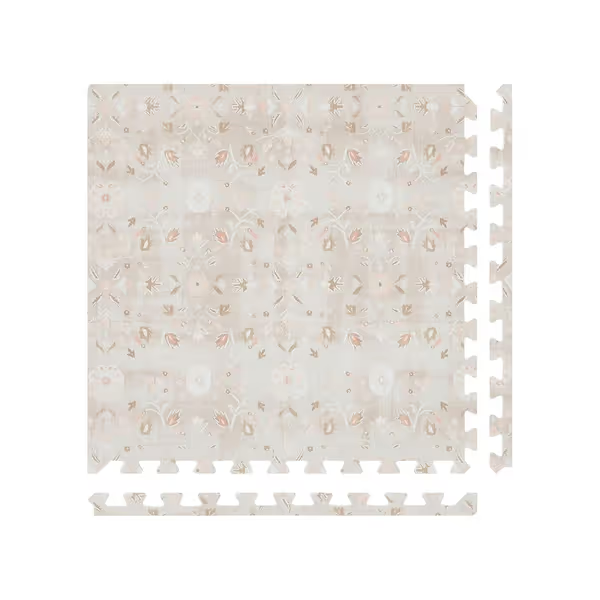
House of Noa 4x6 Linen Gemma Play Mat
A mat like House of Noa's EVA foam system (with certified Greenguard Gold low-VOC emissions) handles this well. Its modular tiles let you section off zones, like a 'kitchen' corner for pretend cooking, while the raised edges contain sensory spills. I've personally used it for bean scooping with zero staining, but always check your specific mat's care instructions. If you're unsure, follow our play mat cleaning guide for stain removal and disinfecting by material. Unknown: Long-term EVA foam durability under constant sensory play varies by brand, so request abrasion test data.
Social Play Mat Activities: Building Cooperation
Toddlers crave connection, but sharing mats can spark conflict. Structure interactions to build skills:
-
Mirror Movement: Sit facing your child across the mat. Copy their jumps or claps. Developmental win: Reinforces empathy and turn-taking, key precursors to conversation.
-
Collaborative Art: Tape a large paper roll to the mat. Let kids pass markers while chanting 'my turn, your turn'. Floor safety check: Ensure markers wash off your mat surface. Before buying, search '[mat brand] + marker stain test' in parenting forums.
-
Obstacle Relay: Set up tunnels (use chairs + blankets) and soft blocks. Take turns navigating. Critical tip: Mats must stay completely flat during this. Loose tiles or curled edges create tripping hazards. Verify non-slip backing claims with third-party reports (e.g., SCS Global slip-resistance tests).
Safety & Material Truths Every Parent Should Demand
Most online reviews skip hard questions about materials. As a parent who reads safety data sheets (SDS) for fun, here's what actually matters for 2+ year old play mat safety: Cross-check your setup with our non-toxic play mat safety checklist to verify materials and certifications.
-
VOC Off-Gassing: Toddlers spend hours face-down on mats. Demand reports for total VOCs (TVOC) ≤50μg/m³, stricter than generic 'meets CPSIA' claims. Red flag: Brands saying 'no odor = safe'. Many VOCs are odorless. Show the test report.
-
Phthalate Screening: Required under CPSIA, but some 'compliant' mats still contain non-listed plasticizers. Insist on Prop 65 compliance plus independent GC/MS testing.
-
Flame Retardant Clarity: Avoid mats listing 'FR-treated' without specifics. Safer options use inherently flame-resistant materials (like certain rubbers), not chemical coatings. Unknown: Long-term effects of low-dose FR exposure in toddlers remain under-studied.
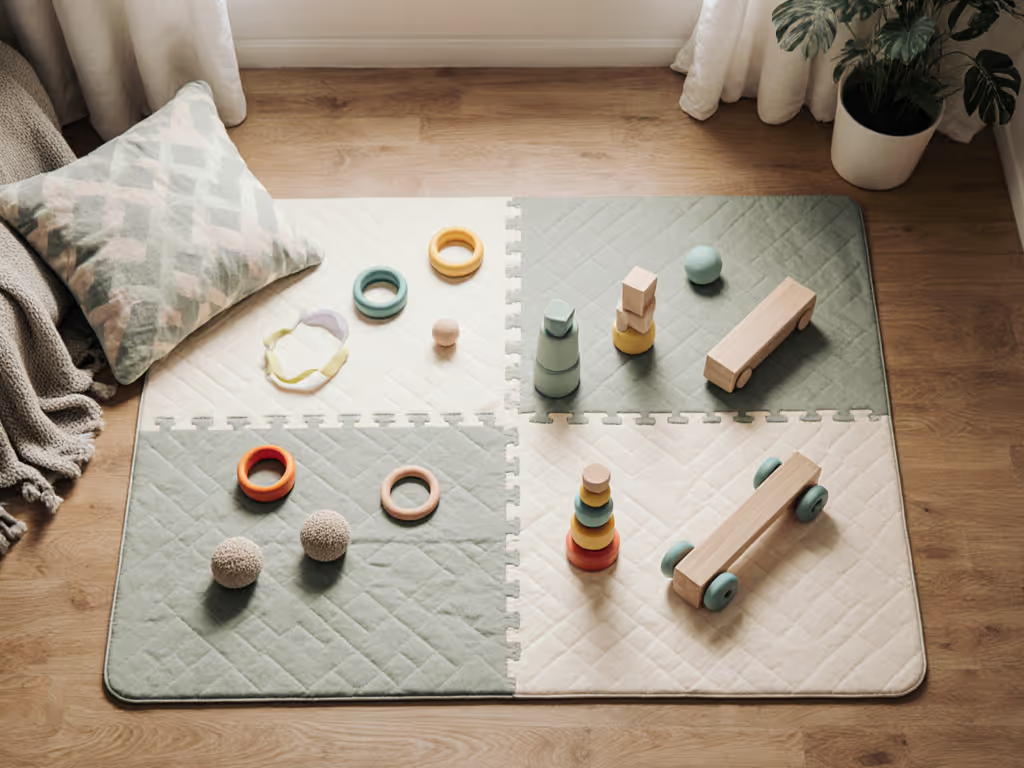
Smart Space Solutions for Small Homes
Apartment-dwelling parents face unique hurdles: limited square footage, noise concerns, and multi-use rooms. For compact recommendations, see our apartment-friendly play mat comparison for space-saving designs. Address these by:
- Choosing reversible mats: One side for baby play (high-contrast), the other for toddler use (neutral tones blending with living rooms)
- Prioritizing rollable designs: Mats under 1" thick store easily under sofas. Avoid puzzle tiles; they will get lost in couch cushions or chewed by pets.
- Using noise-reducing layers: Place mats over thin felt underlays (not rubber) to dampen thuds. Verify compatibility: Some radiant-heated floors require mat thickness ≤0.4", so request manufacturer specs.
Real Talk: That 'premium' mat priced at $150 has a true lifecycle cost of just $1.25/month if it lasts 12 months (vs. $25/month for a $30 mat replaced quarterly). Demand brands publish this math. Transparency is a feature.
Final Takeaway: Your Play Mat as a Developmental Tool
The best toddler play mat activities aren't about gimmicks, they're about leveraging space intentionally. Whether building pillow forts for spatial reasoning or hosting teddy bear tea parties for language growth, how you use the mat matters more than the mat itself. But it must be safe, durable, and adaptable. Always prioritize verifiable material claims over marketing fluff. When in doubt, show the test report. Then watch what your child creates, they'll surprise you.
Ready to go deeper? Explore our [Toddler Development Milestone Checklist] - it maps specific play activities to your child's current stage, with material safety notes for every suggestion.
Related Articles

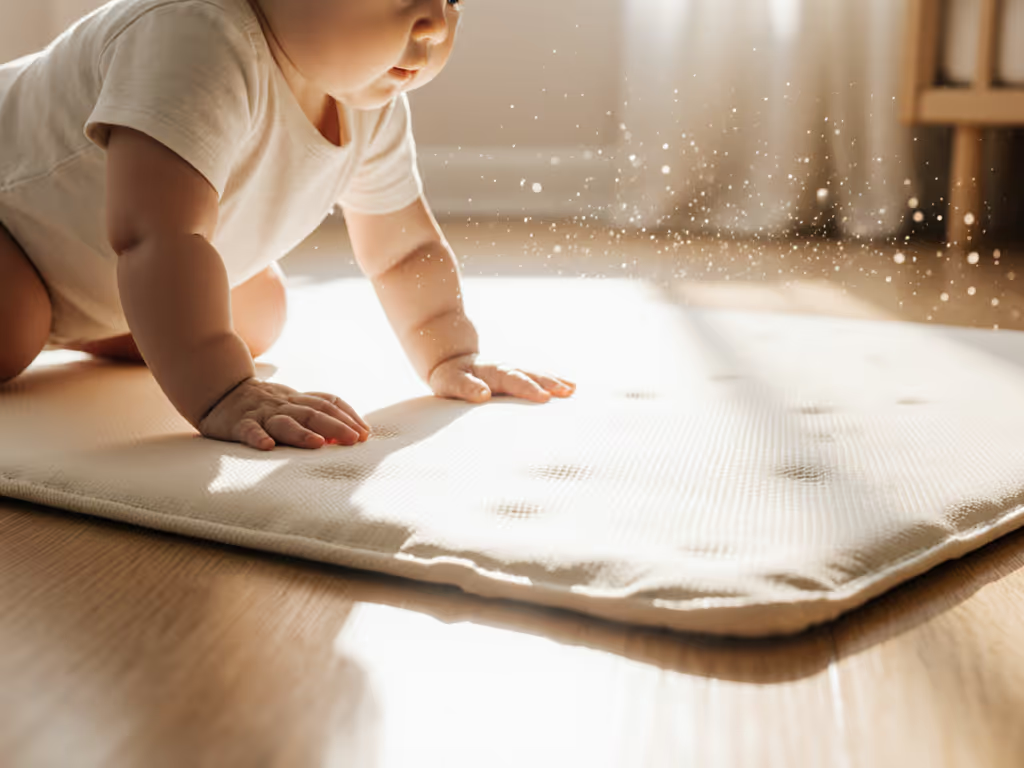
Rolling Development Play Mat: Stable Surface Science
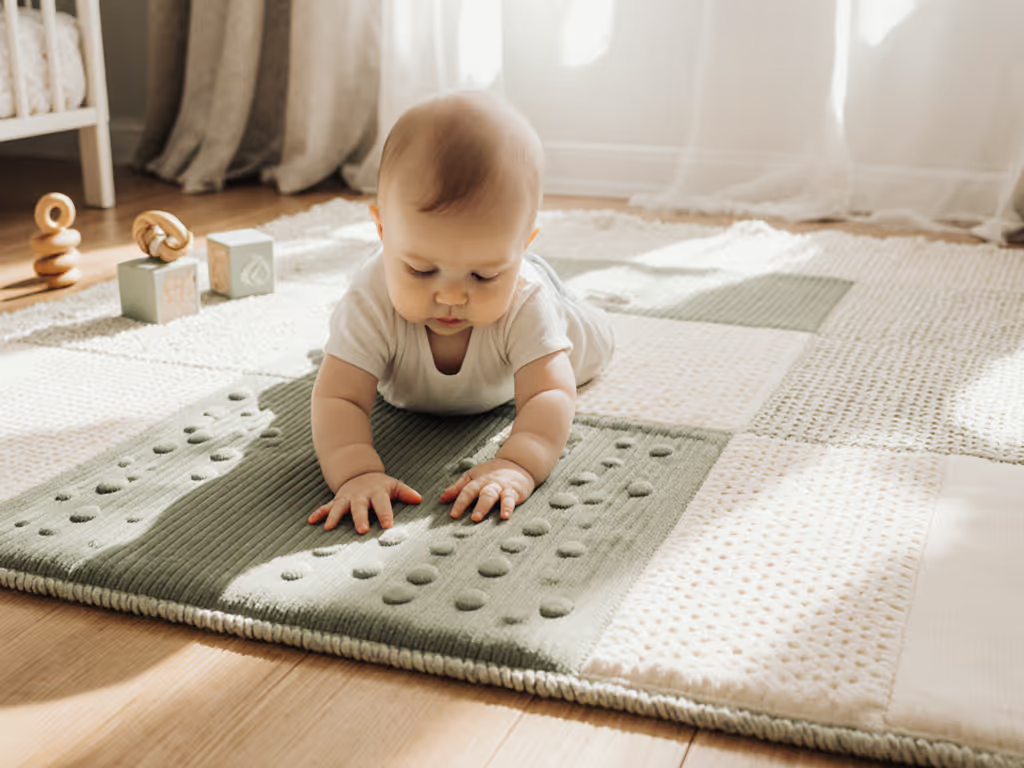
Sensory Texture Play Mat: How Textures Build Infant Tactile Skills
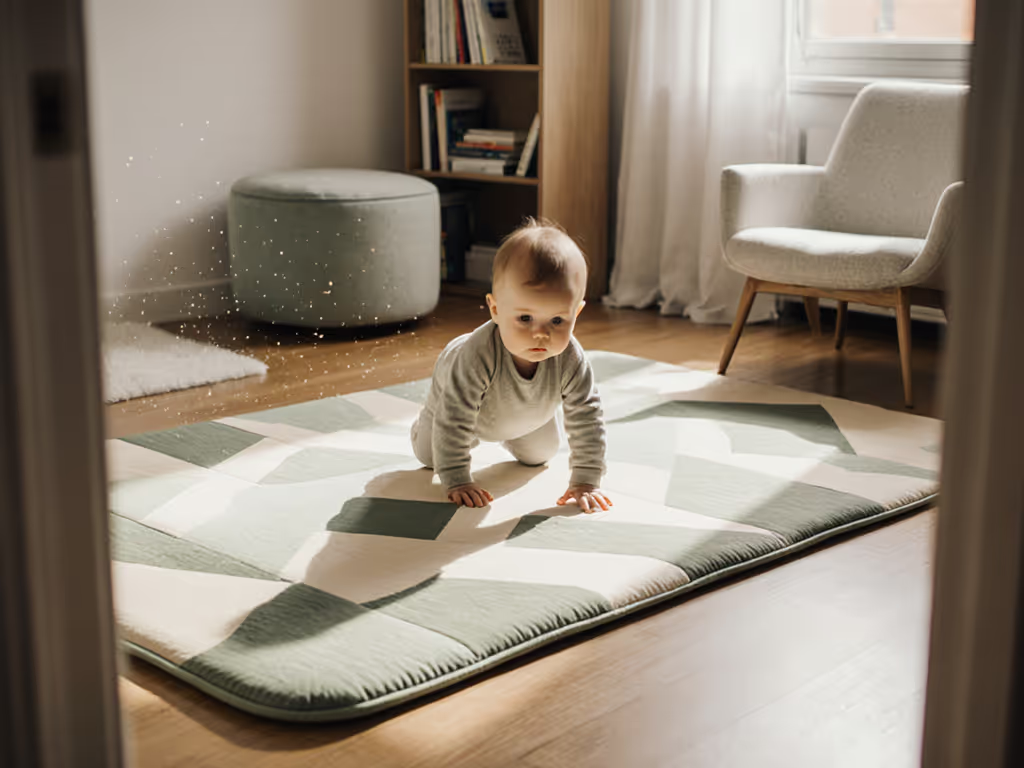
Motor Skill Play Mats: Space-Smart Baby Development Surfaces
